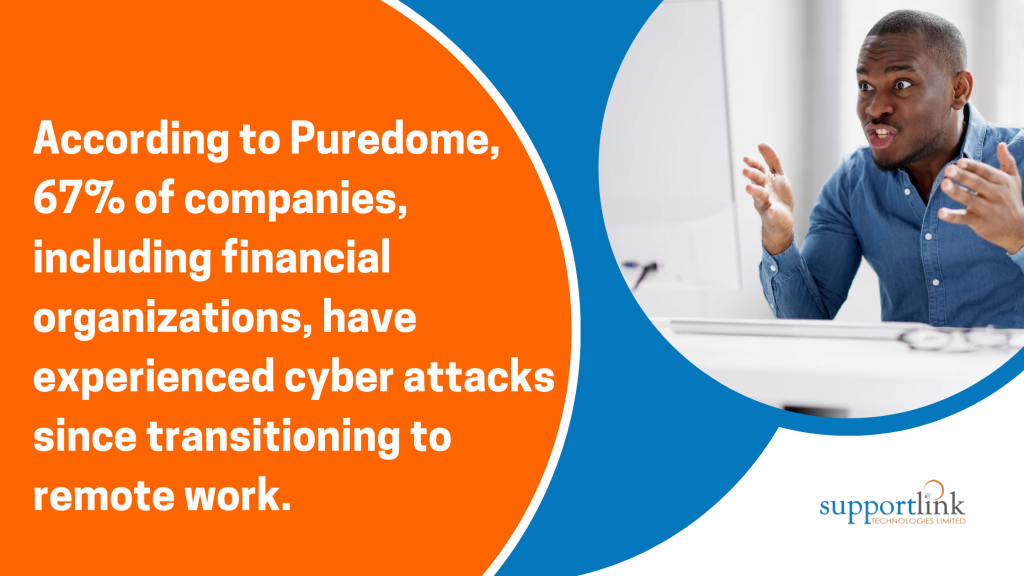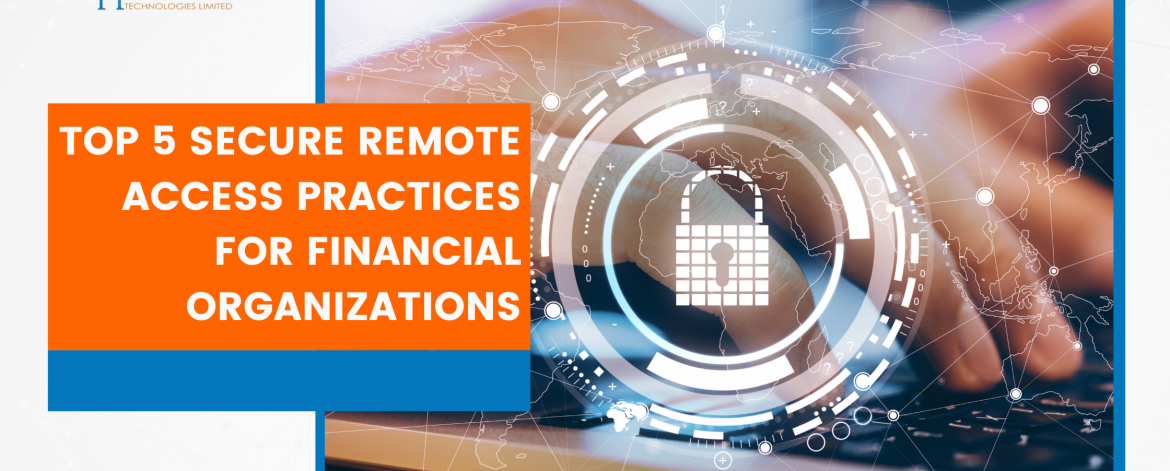What are the top secure remote access practices for financial organizations? It is no secret that financial organizations are prominent targets of malicious hackers. As such, they must engage in secure remote access to protect their systems and reduce vulnerabilities. Keep reading this blog post to discover the top five secure remote access practices for financial organizations.
According to Puredome, 67% of companies, including financial organizations, have experienced cyber attacks since transitioning to remote work. Since the aftermath of the pandemic, several organizations have embraced remote working.
Remote work increases the risk of cyber-attacks, so there is a need for remote access security. Secure remote access includes all technologies and systems that protect an organization’s systems, assets, and processes from unauthorized access. Financial organizations are a big target for hackers, so secure remote access is critical for financial organizations with remote workers.
5 Best Remote Access Measures For Financial Organizations

While financial organizations embrace remote work and technologies to carry out remote work evolve, cybersecurity risks also emerge continuously. Accessibility increases due to remote work, leading to new cyber vulnerabilities. Financial organizations must update defense strategies continuously to address such vulnerabilities. Cyber attacks on financial organizations include phishing, social phishing, social engineering attacks, and ransomware attacks. Here are the five best remote access measures for financial organizations.
Multi-factor Authentication (MFA)
Multi-factor authentication (MFA) adds an extra layer of protection to increase the security of a financial organization’s login protocols. MFA requires a user to complete another verification step after entering their login credentials. It is an effective strategy to protect financial organizations’ systems and accounts that contain sensitive data. MFA is a vital remote access security practice for financial organizations.
Data Encryption
Encryption involves converting plain text data into unreadable text that humans cannot interpret without the encryption key. Data Encryption ensures that even when hackers can access sensitive data, they cannot interpret or use it. It is a crucial remote access practice for financial organizations to protect sensitive data. For best results, financial organizations should encrypt data at rest and in transit.
Use Of Strong Passwords
Implementing strong passwords is non-negotiable for remote workers in financial organizations. Simple, easily discernable passwords can give threat actors easy access to a financial organization’s data and systems. Hackers also have easier access across several services when they repeat passwords, regardless of complexity. Financial organizations must implement password policies that require employees to create unique and complex passwords.
Continuous Software Update
Outdated applications and software can increase a financial organization’s cyber risks. Hackers can look out for outdated technologies and exploit them to gain access to the organization’s systems. Malware attacks are on the increase, and more risks are evolving. Therefore, financial organizations must proactively update applications and software, ensuring they are updated with the latest security features. This is especially critical for remote work to ensure systems function optimally to keep hackers away.

Privileged Access Management
All employees in a financial organization require some level of access to systems but do not need the same level of access. Privileged access management helps to ensure that the minimum level of access is granted to a user. Privileged access management reduces hackers’ chances to exploit an over-privileged account. Privileged access management is a crucial remote access security practice that can prevent potential cyber threats to your financial organization.
Secure Your Financial Organization With Support Link Technologies
BeyondTrust’s privileged remote access provided by Support Link Technologies can help your financial organization’s IT team with visibility and control. Privileged remote access can help your organization access important assets without compromising security. It also ensures that employees and third-party vendors have the least privilege while accessing the network remotely.
Privileged remote access reduces the entry points of cyber attacks, such as hackers bypassing MFA. We can provide cybersecurity training for your staff. Our training is extensive and tailored to your organizational needs.
Conclusion
Since the pandemic, remote work has become a regular part of many organizations. Financial organizations have also embraced remote work. However, remote work increases cybersecurity risks, so secure remote access must be employed to reduce these risks. This blog post describes the top five secure remote access practices for financial organizations and how Support Link Technologies can help your financial organization with secure remote access. Contact us today to learn more about our services and customized training programs.


